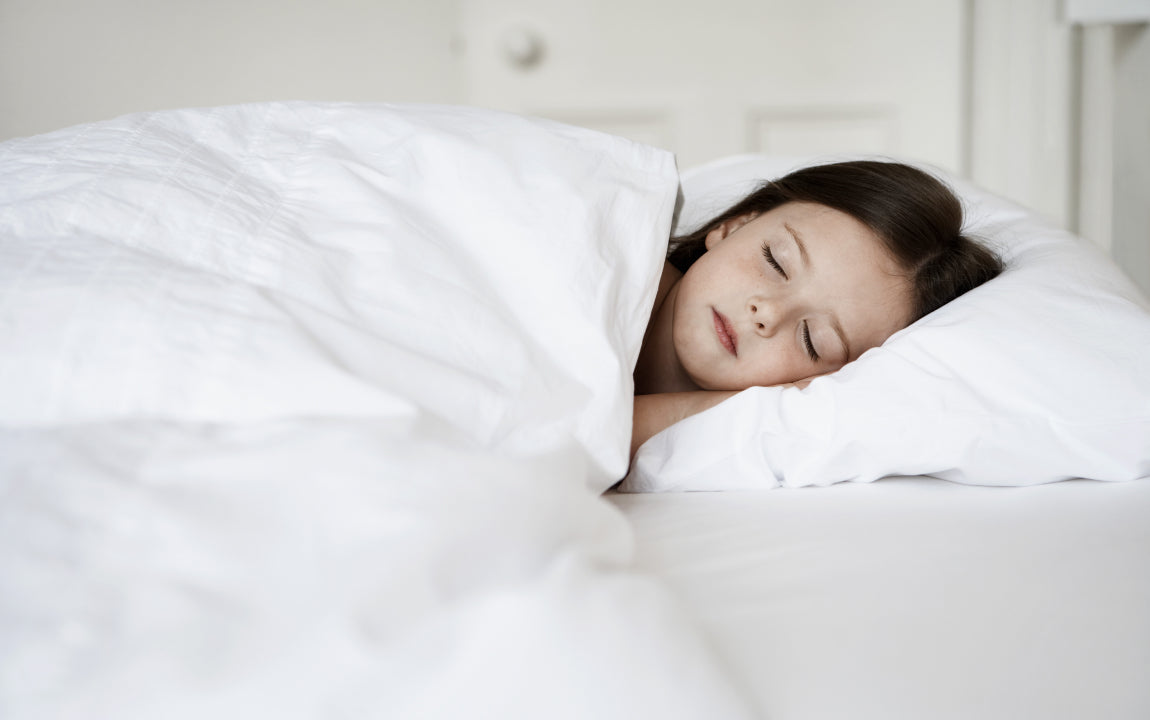Bedding for Better Sleep

Bedding for better sleep
Ah, there’s nothing like laying down on clean, soft sheets. It goes beyond the feeling, though, because the cleanliness and material of our bedsheets really do make a difference in our sleep!
A 2012 study by the US National Sleep Foundation found that 73% of us sleep better on fresh (clean) sheets. How often should we wash? Once a week and even more often (3-4 days) if your pets sleep with you or you have allergies.
Can the right bedsheets really improve your quality of life? If you struggle with allergies, insomnia, night sweats, dermatitis, eczema, acne or bedsores, one company has developed a fabric that was proven to reduce symptoms of all of these conditions, and is actually the only FDA-cleared bedding. The sheets are a class 1 medical device for those who have atopic dermatitis, or pressure ulcers, since studies have shown that patients using the sheets have reduced symptoms. The patented DermaTherapy fabric is woven specifically to reduce friction, wick away moisture (allow it to escape from skin), and is treated with an antimicrobial coating that does not allow germs to grow and releases soil through many washings. The company also has a 90 day money back guarantee, which is more than sufficient to see results (most patients see improvements within 2-3 weeks).
Of course, there are hundreds, if not thousands of other bedsheet companies out there. The top eco-conscious and healthy materials are usually traditional cotton, linen (made with flax) and hemp as this review shows. Why not bamboo? It turns out that due to its incredible strength, bamboo is very difficult to process into a soft fiber for clothing and sheets. These types of fibers can only be achieved by mechanical (expensive) or chemical (dangerous for the environment) means, moving bamboo down the list as a top choice for healthy and sustainable bedsheets. This is a great article about why you should do your research if you are set on purchasing bamboo bedsheets.
I went to the Sleep Foundation for information on that holy grail of sheets, thread count. Thread count is the combined number of lengthwise (warp) and widthwise (weft) threads per square inch of fabric. Generally speaking, the higher the thread count, the more comfortably soft sheets are, and thread counts between 200 and 600 are a great choice (except for linen, which ranges from 80-140). Specific materials, like Egyptian Cotton, and weaves, like percale, also have “best” thread count ranges too.
Mattress covers: The right mattress can be a significant financial investment, so protecting it from stains, infestations and allergens is a good priority. Some mattress covers fit over the top and sides like a fitted sheet, which is ideal if you need to wash it frequently due to spills and accidents. The ideal mattress cover to protect against dust mites, however, should completely encase the mattress. For this purpose, allergen and dust-mite covers will be made of coated fabrics or microfiber fabrics, to prevent the mites from passing through. The microfibers are so tightly woven, that they exclude everything larger than 8 microns, yet with modern technology both the coated and microfiber fabrics can offer breathability so that it doesn’t reflect sweat and heat back to your body. With all mattress covers, it’s a good idea to wash and dry them before using (according to manufacturer’s instructions), to reduce the amount of VOCs in the cover. Here are several that have great reviews by consumers:
- SureGuard Mattress Protector, $45 for queen size: non-toxic, free from Vinyl, PVC, Phthalates, fire retardants and other toxic chemicals
- Saferest Premium Mattress Cover, $38 for queen: most economical
- UltraBlock Waterproof Mattress Protector, $41 for queen: best for accidents, spills
- Mission: Allergy Dust-Mite-Proof Mattress Cover, $165 for queen: best for protection against dust mites
Pillow covers: Being close to your face and where you breathe means that pillows are a very important player in air quality. Although pillows are recommended for replacement every 2 years, they can become stained and invaded by allergens in just a few months if not properly protected. Pillow covers do this as the first thing you put over your pillows, before the outer pillowcase. Here are a few choices that help your pillows to last longer while you sleep more comfortably:
- Bedcare All-Cotton Pillow Protective Covers: certified friendly by the Asthma and Allergy Foundation of America, these are about $23 per queen cover.
- Made of polyester and nylon, these are Amazon’s best seller and best rated. Allerease Maximum Allergy Pillow Protectors are more economical at about $15.50 for a 2-pack.
- Hospitology Products Pillow Encasements ($19 for 2 queen covers) are waterproof, dust-mite proof and bed-bug proof. Designed by a doctor, the microfiber (polyester) is said to be cool to the touch and breathable (but may not allow for easy “fluffing” of pillows as down pillows require) due to the tight weave. Hospitology also makes mattress and box spring encasements (protectors).






